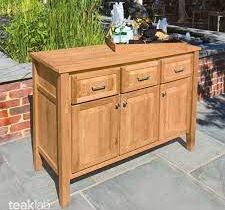Did you know that 77 percent of people want to learn how to live more sustainably? If you want to learn more about energy-efficient roofs, we can help.
In this guide, we’ll go over energy-efficient roofing options you can consider.
Want to learn more? Keep reading.
Energy Star Certification
The federal government knows how critical energy-efficient roofs are to reduce energy use.
The Energy Star program will help owners choose energy-efficient roofing materials.
Energy Star labels are on efficient appliances. You’ll also see this rating on reflective roof coatings, roof panels, and shingles. As a consumer, you’ll know that the product’s graded as energy efficient.
Look for roofing materials that have the Energy Star certification. Roofing materials that have the Energy Star label get built with a higher level of solar reflectance.
Instead of absorbing the sun’s rays, it will bounce the rays outward and away from the property.
When you choose the right roofing materials, you’ll lower the surface temperature of your roof.
You’ll also reduce the demand for air conditioners, and you’ll save money over time. Some buildings are eligible for Energy Star roofing rebates.
When shopping, roofing materials that get labeled as energy-efficient might use less energy. Yet, they might not meet the stricter standards of an Energy Star product.
Look for materials that have the Energy Star label.
Metal Roofing
Metal roofing is the best option among energy-efficient roofing materials. Metal roofs are easy to install, are durable, and reflect U/V rays well.
Choosing metal roofing is essential if you want to maximize energy efficiency. Look for Energy Star options.
Shake Shingles
Shake shingles create rustic looking roofs. These shingles get made with wood roofing material.
The tapered design helps your roof withstand storms and winds while shedding rain.
The shingles will absorb less heat compared to other shingles. Look for a lighter color choice, so the shake shingles reflect the sun rays.
Shake shingles aren’t the top option for humid environments. Wooden shingles will absorb humidity, which can cause mildew and rot problems.
Asphalt Shingles
Asphalt shingles are a typical roofing material that most people choose. These types of shingles don’t breathe as well as the shake shingles but hold up well against humidity.
If you want an energy-efficient option, choose lighter colored asphalt shingles. Asphalt will get hotter than wood.
Tile Roofing
Tile roofing material gets made from concrete, slate, or clay, and they don’t tend to absorb sunlight. Tile roofing will absorb more light compared to metal roofs.
You can treat your tiles to a reflective coating that will help reflect sunlight. You can also treat older tile roofing to another reflective coating.
Consider Where You Live When Shopping for Roofing Materials
If you live in a drier environment but have a lot of sunlight, consider shaking shingles. Don’t choose this option if you get a lot of heavy rain.
Consider metal roofing for a hot and sunny climate. If you live in an area where you get frequent hail storms, consider a different roof.
If you live in a warmer area with a lot of humidity, consider using asphalt shingles. Asphalt shingles won’t break down in humid climates.
For an area with high humidity and lots of sunshine, consider tile roofing. Tiles are durable against hail. Tile roofing will also reflect the sun after it gets covered with a reflective coating.
Get Proper Insulation and Ventilation
An energy-efficient roof will make a huge difference. You’ll also need to consider the insulation. If the insulation in your attic or below your roof isn’t excellent, you might have an issue with unwanted heat.
Ventilation helps maintain the energy efficiency of your roof. Install rafters and attic fans to boost air circulation.
You could also get vents installed in your attic so air can exit and enter. In the cooler months, cold airflow will keep the attic space cooler and reduce ice damming.
Ice damming occurs when the snow melts on the roof. Heat escapes the attic and refreezes in the gutters of the roof. Roof leaks can arise from this issue.
In the winter, the insulation keeps heat in your home. In the summer, the natural airflow will move out of the attic and protect the roof by removing moisture.
A common mistake homeowners make is blocking the airflow at the eaves. Don’t cover the soffit vents with insulation. This way, you can allow for natural airflow and proper ventilation.
If you want to get an energy efficiency upgrade for your roof, upgrade your attic as well.
Work With Professional Roofers
When you go to pick your energy-efficient roof, you’ll want to speak with a roofing expert. Look for a roofing business that has existed for years and has a strong track record. Ask your network for local recommendations.
Don’t forget to ask if the roofing company has workers’ compensation and liability insurance.
Workers’ compensation will protect you if an employee gets hurt on the job. Liability will protect you if the roofers cause damage during a repair.
If you’re ready to get an energy-efficient roof, check out Blue Nail roofing for all your roofing needs.
Now You Know More About Energy-Efficient Roofing
We hope this guide on energy-efficient roofs was helpful. Take your time considering the climate and what roofing system would work best.
Keep all our tips in mind when you shop around for an energy-efficient roofing system.
Don’t forget to browse our other helpful resources on technology, business, and more.











